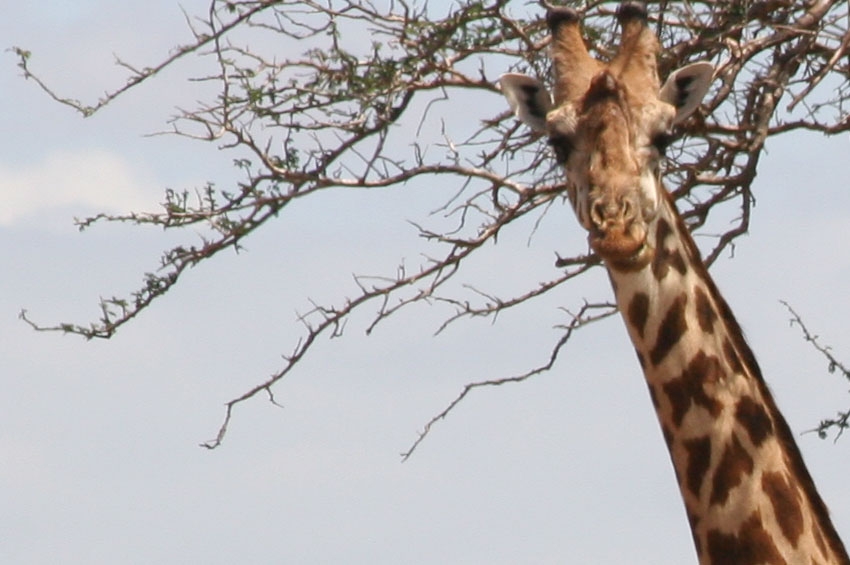Biodiversity loss and ecosystem degradations are increasingly occurring, and this endangers human health and possessions. As a senior living organism which governs and takes control over the nature, human being is associated with most of physical and biological changes that appear on the earth.
To reverse the situation, there is a need of adopting strategies towards mitigating them before, especially through activities promoting sustainable use of resources and increasing awareness among people.
People of all age should understand that the biodiversity plays critical ecological functions that are important for the interconnected web of life supporting systems, in addition to its socio-cultural and aesthetic values. Regional and international collaborations are at the heart of conserving local ecosystems. In Africa, the ecosystems of the Albertine Rift significantly contribute to the production of global public goods and services, such as protection of biodiversity, climate stabilization, carbon sequestration and global waters. Gishwati forest-in Rwanda is one of the critical ecosystems in East-Africa that need special conservation interventions.
Gishwati Forest Reserve is a secondary mountain rainforest fragment located just south of Volcanoes National Park in western Rwanda. It is part of the Congo-Nile Divide forest complex that includes Nyungwe National Park in Rwanda and Kibira National Park in Burundi. The forest was orthogonally earmarked as forest conservation zones in 1933. However, over the past decades, these forests were nearly depleted largely due to resettlement and farming in the aftermath of the 1994 Genocide against the Tutsi. Initially, the forest size was estimated to cover 250,000 hectares, reduced to 28,000 hectares in 1980s, but the current size is 1,570 hectares.
Besides the ecosystem goods and service it provides to the surrounding communities and its contribution to the national economy, Gishwati is home of animal species that are under international alarm for protection. There are more than 130 species of birds including 14 that are endemic to the Albertine Rift and two IUCN Vulnerable species: Martial Eagle (Polemaetus bellicosus) and Grey Crowned Crane (Balearica regulorum). Eastern chimpanzees (Pan troglodytes schweinfurthii) and Golden monkeys (Cercopithecus mitis kandti); both listed as Endangered on IUCN list the flagship and umbrella species of Gishwati forest. The conservation of the primate populations of Gishwati forest does not only prevent their extension but also other numerous animal and plant species that share the same habitat with them cherish.
The ecosystem goods and services provided by Gishwati Forest are enormous; it serves local farmers by absorbing and slowly releasing rainwater, preventing loss of topsoil and sometimes-disastrous landslides, and stabilizing microclimate. The forest filters and purifies septic tank discharge and agricultural runoff. It produces organic material that enriches soil, and recycles vital soil nutrients without the need for expensive chemical inputs. The forest is a continuing source of birds, bats, and insects that pollinate crops and aid in bio-control of insect pests. Conversely, under a regime of deforestation, these benefits are not just lost locally but impacts are also felt miles downstream. Besides that, Gishwati is an endangered ecosystem under alarming threats. Human activity has been changing the natural ecosystems through agricultural and human settlement, cattle grazing, mining, and over-exploitation of certain species and the introduction of alien invasive species. This has resulted in habitat loss and degradation, species lost, and ecological processes impaired.
Extensive efforts have been made to conserve Gishwati. The story of Gishwati took a happy sharp turn in 2007 under conservation initiative of the Great Apes Ioa through the Gishwati Area Conservation program (GACP). Considerable gains and progress have been achieved over the last 12 years. With better management and protection, community and regional and international partnerships, prominent conservation achievements have been made. Wildlife populations; especially that of the Chimpanzees and golden monkey have been on a steady increase over the last years due to: restoration efforts, research, community outreach, education, etc.
In 2012, the program has been closed, and the forest was handed to the government of Rwanda under the management of the Rwanda Environment Authority (REMA). In 2017, the forest was declared by the cabinet meeting be part of Gishwati-Mukura National park; a fourth national park after Akagera, Volcanoes, and Nyunwe. The conservation and management plan of has been developed to ensure the ecosystem sustainability and protection whilst addressing conservation challenges of this forest. This Gishwati-Mukura conservation and management plan provides a regulatory framework upon which, new strategies, approaches and partnerships for conservation shall be based, to ensure the survival of the habitat and wildlife, and of the goods and services it provide. The forest is now better managed, and its ecological integrity more assured.
The future of Gishwati is brighter since it was gazette by the government of Rwanda as the fourth National Park. Thus, the Eco-tourism, among others, will contribute a lot in improving the livelihood of local communities while ensuring its sustainable management. Therefore, local communities need to be aware of both opportunities and challenges so that they can to engage themselves in the conservation activities of the park. The decision of the Government of Rwanda to have Mukura-Gishwati forests as a National park gives hope that communities around the park will be mobilized to live in harmony with nature without compromising the well-being of the future generations who will surely rely on it as much as they do now.




















